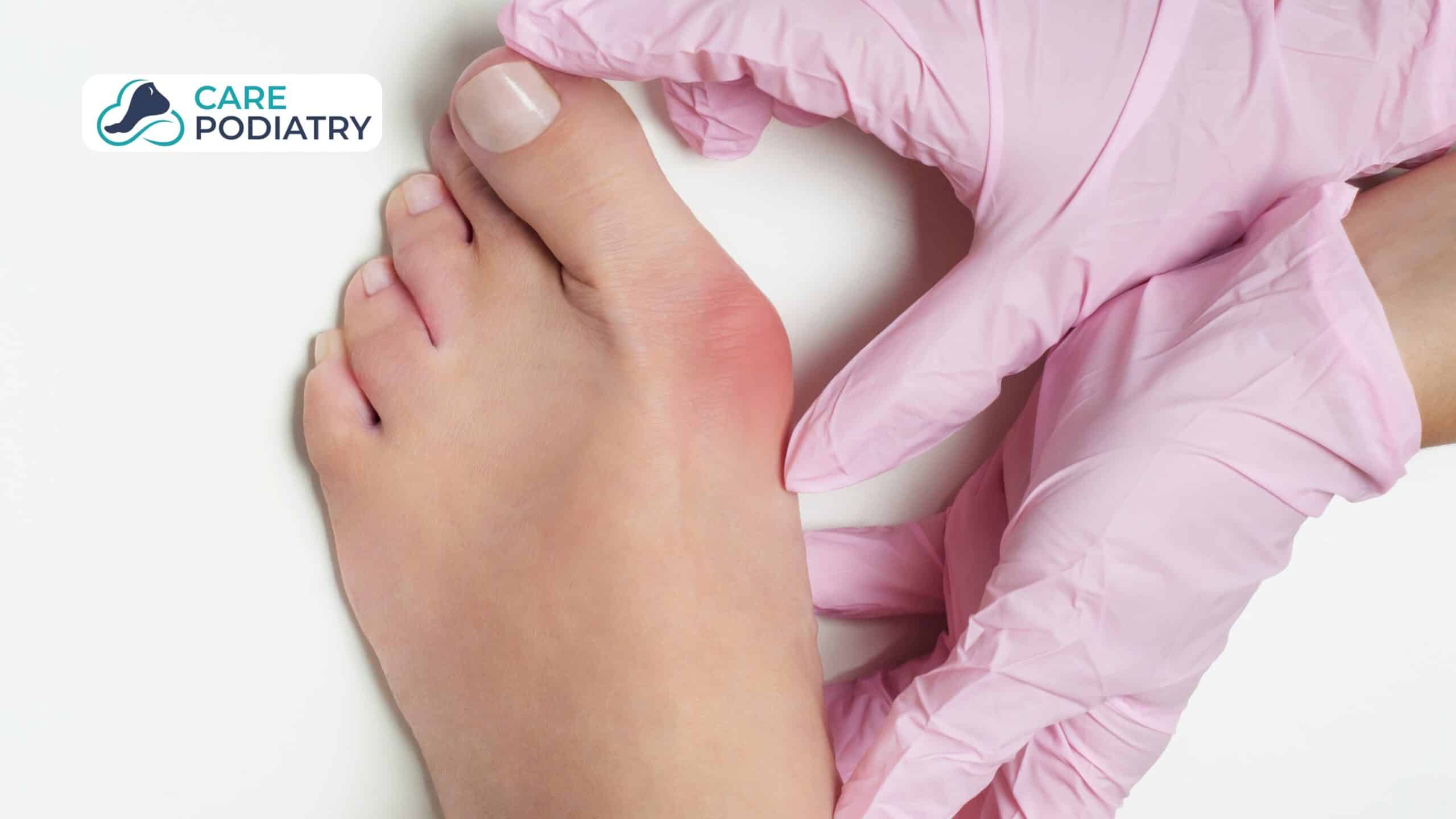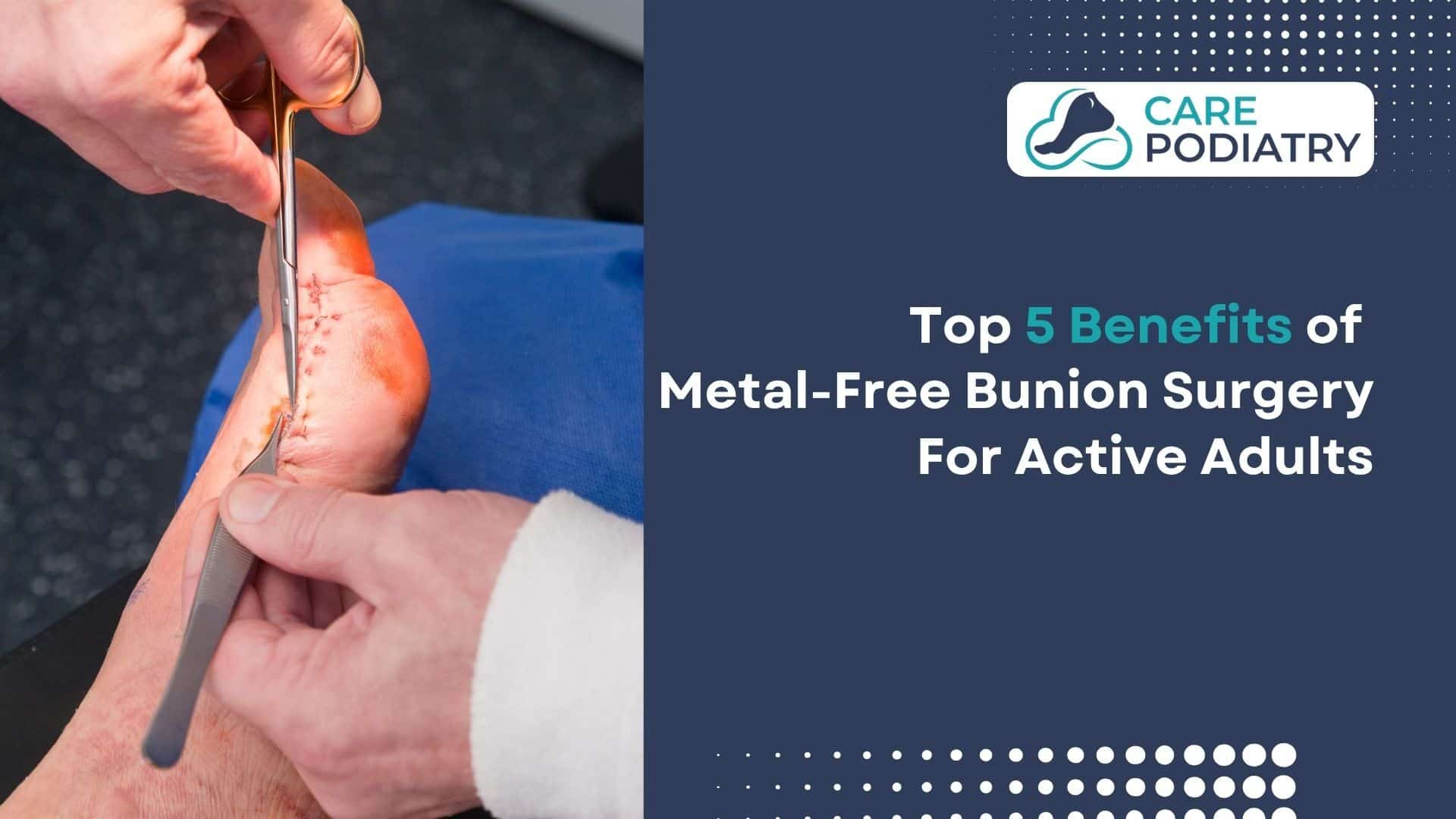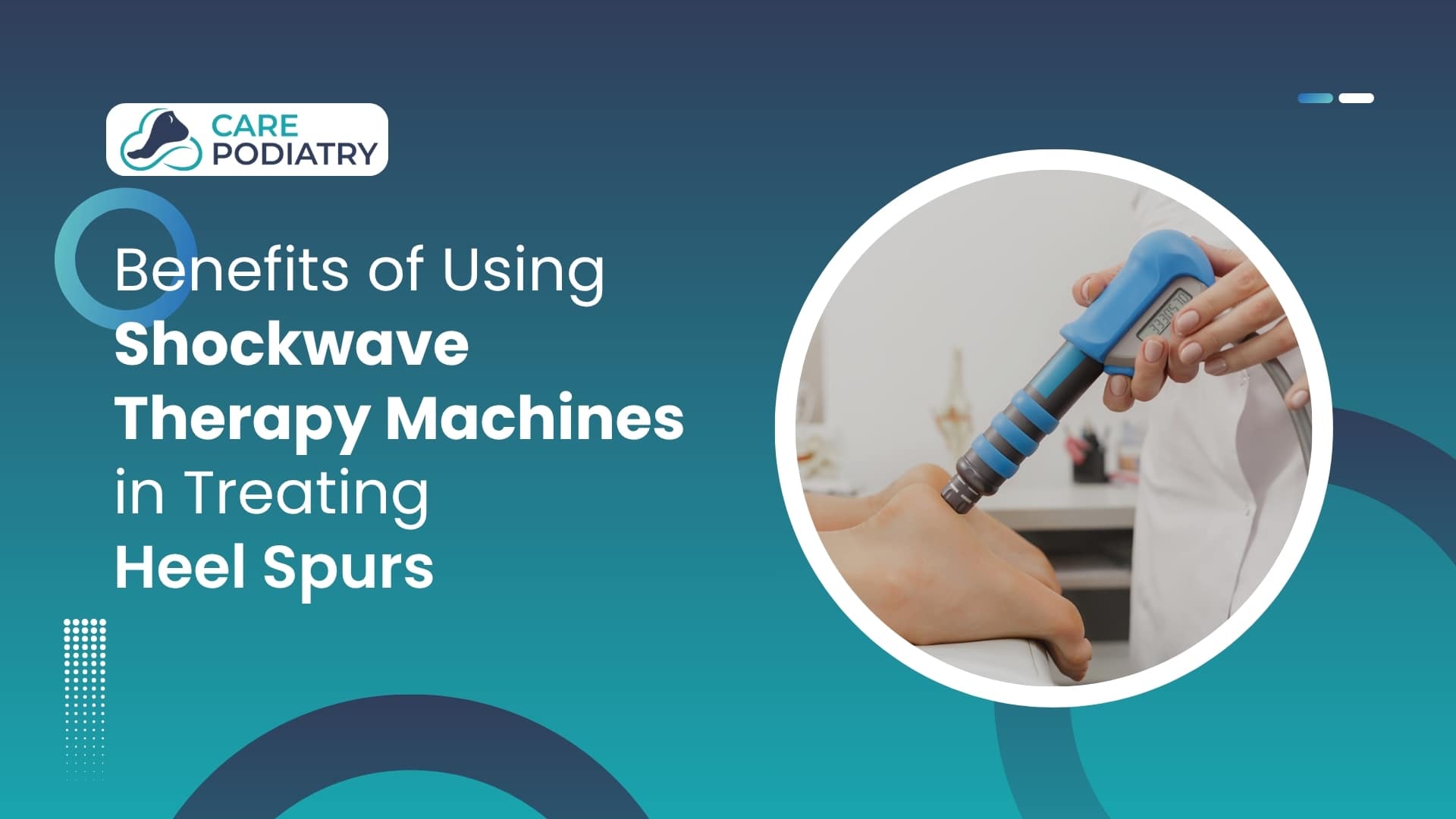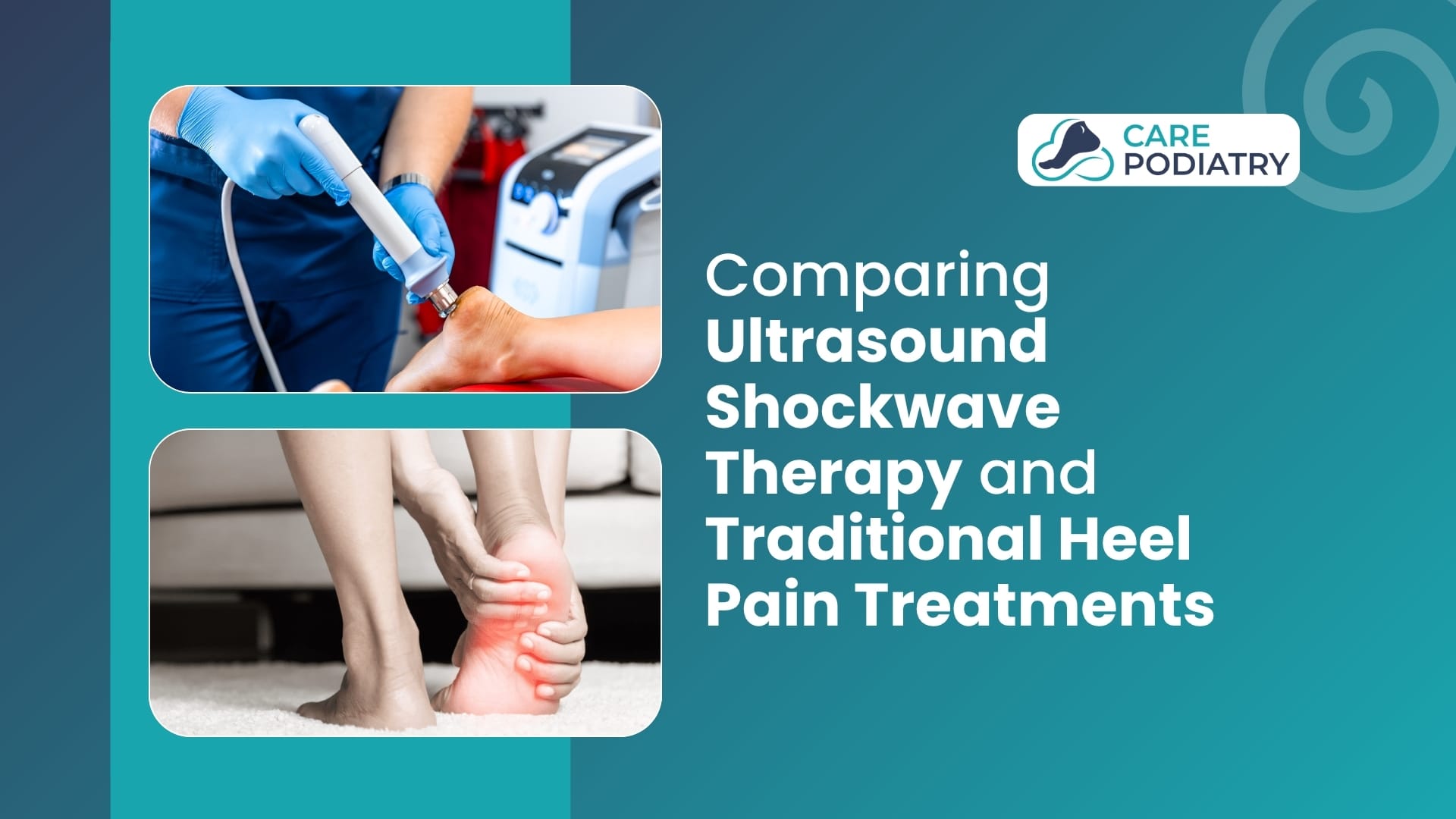Bunions may make it uncomfortable to walk and can make being active tougher. Traditional surgery for bunions is known to involve metal implants that may lead to some problems. Nowadays, many active people are choosing metal-free bunion surgery.
Recovering from this approach is faster than before; it involves fewer risks, and the patient experiences better long-term comfort. We’ll discuss the five major benefits of choosing metal-free bunion surgery for those who plan to keep active.
1. Faster Healing Time
Most active adults hope to get moving again as soon as possible. By using metal-free bunion surgery, this procedure has become possible. Since no metal screws or plates are used, the body doesn’t have to work as hard to accept foreign materials. This produces a more natural way to heal your wounds.
Soft tissues and bone are realigned in the procedure, without using any hardware. As a result, your body experiences less damage. Because of this, many patients notice less pain and swelling after undergoing an operation.
Many individuals are able to start walking in special shoes within just a few days. The recovery time of this surgery is much less than 6-12 months, which is the common recovery time from metal-based surgery.
2. No Risk of Metal Allergies or Reactions
Some individuals are allergic or sensitive to metals like titanium or stainless steel. Traditional bunion surgery uses screws and plates made from these metals. Even if someone doesn’t have an allergy, the body may still react to these foreign objects over time.
Metal-free bunion surgery eliminates this concern. It uses natural tissue healing and often bio-absorbable materials, which dissolve on their own. There’s no risk of long-term inflammation, irritation, or need for hardware removal later.
For active adults, this reduces the risk of needing a second surgery due to metal-related issues. It’s a safer, cleaner choice for long-term wellness.
For active adults, this reduces the risk of needing a second surgery due to metal-related issues. It’s a safer, cleaner choice for long-term wellness. Studies show that up to 15% of patients with metal implants experience localized sensitivity or allergic reactions, increasing the likelihood of complications. Choosing metal-free surgery reduces that risk entirely and promotes a more harmonious healing process.
3. Improved Comfort and Foot Flexibility
With no metal inside the foot, the bones and joints can move more naturally. This is important for active adults who walk, run, or play sports. Traditional bunion surgeries can leave the foot feeling stiff or uncomfortable, especially when pressure is placed on the area.
Metal-free techniques allow for better foot mechanics. Because the bone is not locked in place with hardware, the natural movement of the joint is preserved. This leads to improved foot flexibility and comfort when walking or exercising.
Over time, this can help reduce the risk of developing other foot problems, such as joint stiffness or arthritis.
4. Reduced Need for Future Surgery
One common issue with traditional bunion surgery is hardware failure. Metal screws can shift, break, or irritate nearby tissues. This sometimes requires a second surgery to remove or replace the hardware.
With metal-free bunion surgery, there’s no hardware to fail. The bone heals naturally in its corrected position. This reduces the chances of needing additional procedures in the future.
For people who live active lifestyles and want long-term results, this is a huge advantage. It also saves time, money, and the stress of undergoing another surgery. Research indicates that revision surgery is needed in 10–30% of traditional bunion cases, often due to hardware complications. Metal-free methods drastically lower that rate, giving patients greater peace of mind and lasting results.
5. More Natural Cosmetic Results
Many people choose bunion surgery not just for pain relief but also for aesthetic reasons. Metal-free bunion correction often results in a more natural-looking foot. The bones are aligned properly, and there’s no need to worry about bumps or ridges from implanted screws.
The incision and healing process are also generally smoother. Since there’s less swelling and no bulky metal to interfere with the skin, scarring is often minimal.
Active adults can return to wearing the footwear they love without discomfort or embarrassment. From sandals to running shoes, your foot looks and feel normal again.

Conclusion
Metal-free bunion surgery offers a smart, modern solution for active adults. With quicker recovery, no metal-related risks, and better comfort, it helps you stay mobile and pain-free. Whether you enjoy jogging, walking, or simply being on your feet, this option supports your active lifestyle. Always consult a specialist to see if metal-free surgery is right for you. Taking action now can bring long-term relief and confidence.
Ready to take the next step toward pain-free living?
Book your consultation with Care Podiatry today. Our expert team offers advanced metal-free bunion surgery tailored for active lifestyles. Your feet deserve the best—schedule your appointment now!
Frequently Asked Questions
Are most people happy with bunion surgery?
Yes, most patients report high satisfaction, especially with less invasive, metal-free procedures. Reduced pain, better function, and cosmetic improvements contribute to positive outcomes, particularly when post-surgical care and rehab guidelines are followed properly.
What is the best age for bunion surgery?
The best age is when the bunion begins to cause pain or limit daily activities. Most surgeons recommend waiting until bone growth stops, often in the early 20s, but surgery can be successful at any adult age.
How old should you be to get bunion surgery?
There’s no fixed age, but patients should be skeletally mature, usually in their 20s or older. Older adults can also have surgery if they’re healthy and the bunion causes pain or restricts activity.
Why avoid bunion surgery?
Some avoid surgery due to fear of complications, long recovery, or recurrence. If the bunion isn’t painful or affecting movement, non-surgical options like padding, orthotics, or footwear changes may be enough to manage symptoms.
Who is not a candidate for bunion surgery?
People with poor circulation, uncontrolled diabetes, or severe health issues may not be good candidates. Also, those with minimal pain or cosmetic concerns alone may not benefit from surgery and should consider conservative treatments first.



